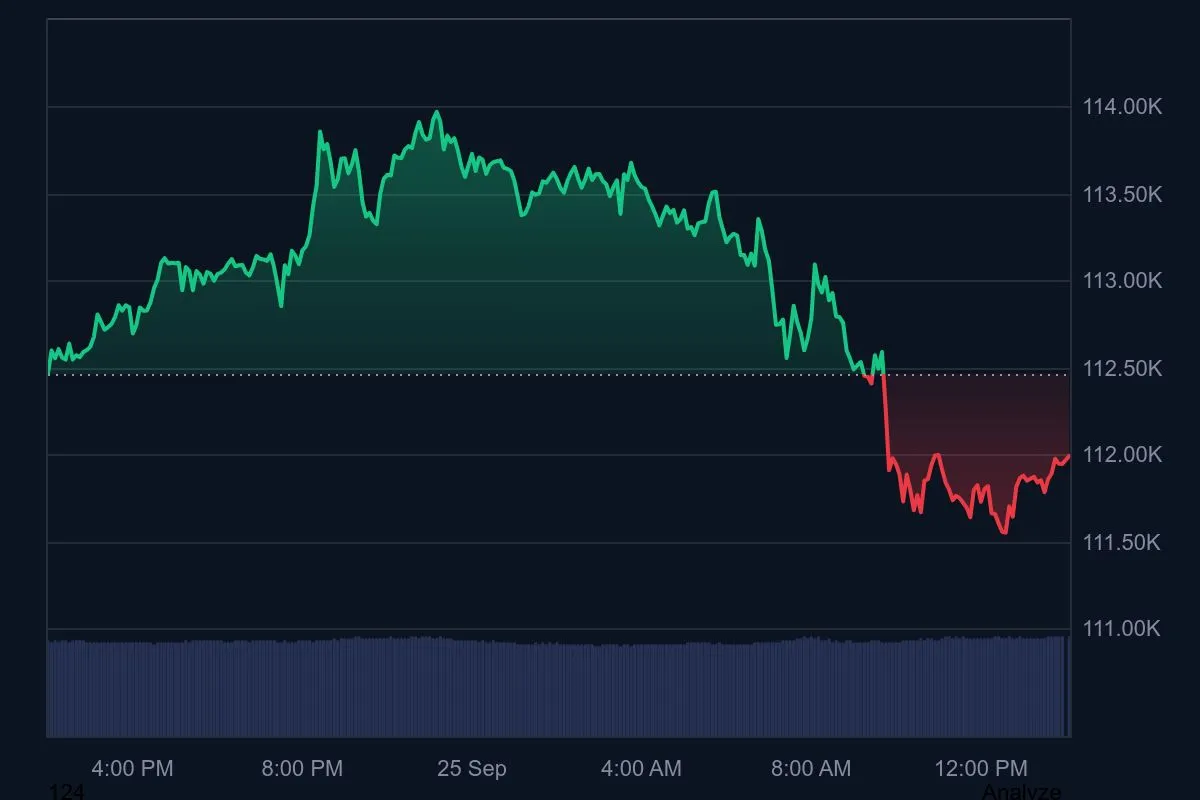Key Highlights:
- Bitcoin ETFs saw an inflow of $241 million on Wednesday, September 24.
- These positive flows followed a period of uncertainty as the ETFs recorded nearly $500 million in outflows earlier in the week.
- However, despite the resurgence of inflows, the BTC price has failed to keep up, losing its hold on the $112,000 level.
Bitcoin ETFs saw new inflows on the last day after experiencing massive outflows prior. However, BTC price failed to sustain momentum, falling below the $112,000 mark on Thursday even though institutional flows were positive.
Bitcoin ETF Inflows Finally Resume
New data gathered by Farside Investors indicated that on September 24, 2025, U.S.-traded spot Bitcoin ETFs would raise a total of $241 million in net inflows, the first positive flow of funds since multiple periods of outflows. Topping the inflows was the iShares Bitcoin Trust (IBIT) by BlackRock, which registered $128.9 million. The Fidelity’s FBTC came next with a figure of $29.7 million, and Bitwise (BITB) attracted a figure of $24.7 million. ARKB of Ark Invest added $37.7 million, and the BTCW of Valkyrie added $6.4 million. The GBTC by Grayscale, which has experienced steady outflow pressure since its conversion, recorded inflows of $13.6 million.
The recent inflow followed a stormy period at the beginning of the week. On September 23, the aggregate flows were recorded as negative, where the ETFs experienced a net outflow of $103.8 million. Fidelity made the largest withdrawal of $75.6 million out of FBTC, and ARKB saw a negative flow of $27.9 million. Grayscale’s GBTC also registered zero inflows as a sign of continued investor caution.

The previous day, September 22, spot Bitcoin ETFs bled even worse at $363.1 million. The outflows in the Fidelity fund alone were $276.7 million, and ARKB had an outflow of $52.3 million. VanEck’s BTCW also lost $9.5 million, and GBTC by Grayscale recorded outflows of $24.6 million. This was one of the greatest pullbacks of the Bitcoin ETF products on a daily basis in September.
However, the overall picture highlights the fluctuation of flows. BlackRock IBIT had a cumulative of up to $60.8 billion since its inception, with daily volumes varying between deposits of more than $1.1 billion (the highest daily deposit) and withdrawals as high as $430.8 million. Meanwhile, the Fidelity FBTC Bitcoin ETF had cumulative inflows of $12.3 billion, although it had extreme swings, with its single-day inflow ranging between $473.4 million and outflows between $344.7 million.
Smaller issuers had had mixed fortunes as well. ARKB of Ark Invest raised cumulative inflows of $2.3 billion, BITB of Bitwise raised cumulative inflows of $2.2 billion, and BTCW of Valkyrie raised cumulative inflows of $1.2 billion. In the meantime, Grayscale GBTC has lost over $24.1 billion in cumulative outflows, and this supports its position as the weakest among the group despite some positive sessions.
What’s Happening with BTC Price?
Although the ETF inflow recovered on Wednesday, the spot price of Bitcoin could not maintain the upward trend. Bitcoin had briefly recovered to $114,000 in the Asian trading before regressing after hitting lows of about $111,000 earlier in the week. By Thursday, the BTC price had fallen below $112,000, breaking the critical support at $112,500 and indicating that the market remains weak.

The context of the recent action was a more general risk-off mood in the world markets. In comments made on Tuesday, Federal Reserve Chair Jerome Powell once more raised the issue of the fairly highly valued assets and put pressure on equities, which further burdened crypto sentiment. Wall Street indexes fell with bond yields improving after better-than-anticipated new home sales in the US, which increased to 800,000 units in August.
The technical environment of Bitcoin has been in an ambiguous state. Other commentators suggested that there are bullish divergences on shorter-term charts and that the relative strength index (RSI) was developing higher lows, with price action developing lower lows. However, traders are concerned whether Bitcoin could rebound to the $113,400 to $114,000 range that is perceived to be necessary to restore the upward momentum. Without such a recovery, negative risks down to $107,000 are still on the table.
Also Read: Griffin AI Suffers $3M Exploit After Attacker Creates 5B Fake Tokens, CertiK Reports



